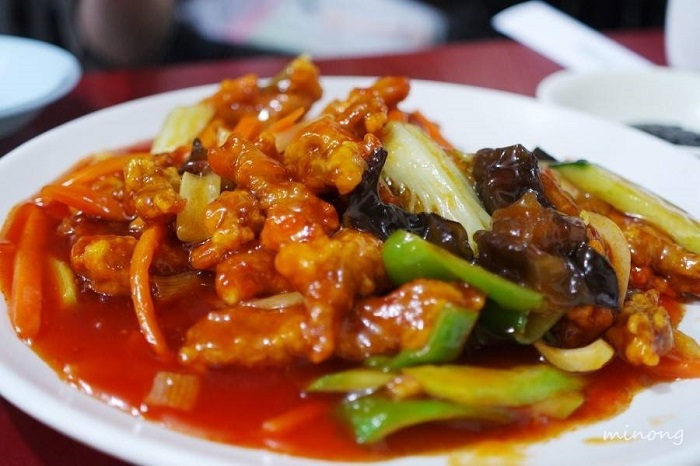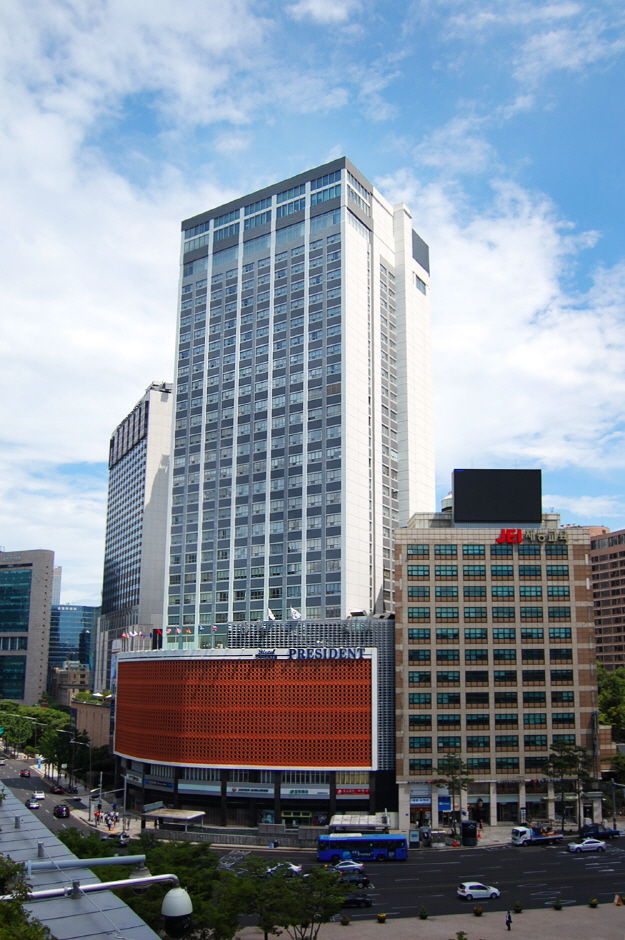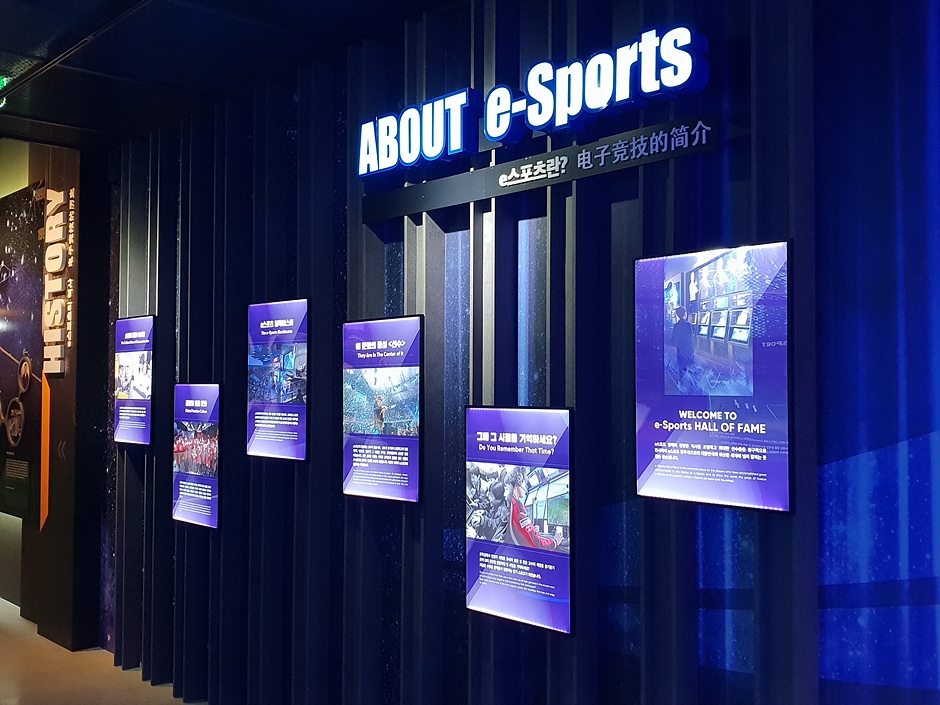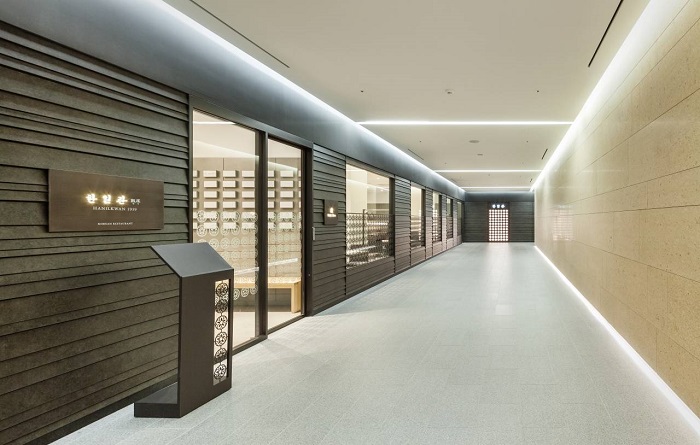Donjon Chamnamu Jangjakgui (돈존참나무장작구이)
6.7Km 2021-03-19
8, Jong-ro9-gil, Jongno-gu, Seoul
+82-2-730-2700
A smoked BBQ restaurant. The representative menu is grilled duck. This Korean cuisine is located near Jonggak Station, Seoul.
Jonggak Hanu (종각한우)
6.7Km 2021-03-19
8, Jong-ro 9-gil, Jongno-gu, Seoul
+82-2-733-5613
A barbecue specialty restaurant located in Jongno, Seoul. The most famous menu is assorted grilled Korean beef cuts. A restaurant that's open for group dinners.
Ground Seesaw Seochon (그라운드시소 서촌)
6.7Km 2023-01-16
18-8, Jahamun-ro 6-gil, Jongno-gu, Séoul
Le complexe culturel Ground Seesaw se trouve à Seochon dans l'arrondissement de Jongno-gu, un endroit où l'histoire, l'art et la culture se rencontrent. Le lieu a été créé par Media N Art, une société de production d'expositions, et conçu par le cabinet d'architecture SoA et l'entreprise paysagiste Loci Studio. Nous vous invitons à découvrir Ground Seesaw pour découvrir une variété d'expositions.
Ogu Banjeom (오구반점)
6.7Km 2021-03-29
60, Supyo-ro, Jung-gu, Seoul
+82-2-2267-0516
It is a store that has been in operation since 1953. This Chinese (cuisine) restaurant is located in Jung-gu, Seoul. The most famous menu is pan-fried dumpling.
Hotel President (프레지던트 호텔)
6.7Km 2021-06-17
16, Eulji-ro 12-gil, Jung-gu, Seoul
+82-2-753-3131
Hotel President is located in the center of downtown Seoul, in front of Seoul Plaza. Nearby attractions include royal palaces, the financial area, a business area, and shopping street, perfect for convenience and completing successful business. Hotel services include a business center and tour desk for the perfect mix of business and pleasure. The hotel offers a 24-hour reception desk, as well as dry cleaning and room service. The 303 guestrooms come in a range of sizes from single to suites, with a choice of view between Seoul City Hall or Namsan Mountain.
Hall of Fame de l'e-sport (e스포츠 명예의 전당)
6.7Km 2024-04-23
31 S-PLEX CENTER, Maebongsan-ro, Mapo-gu, Seoul
Le hall of fame de l'e-sport, est un lieu honorant les grandes figures de l'e-sport en Corée géré par le Ministère de la Culture et des Sports et par l'Association de l'e-sport en Corée. Avec ses différentes expositions, le centre permet de découvrir l'évolution de l'e-sport en Corée. Le centre propose également des activités avec les technologies du jeu vidéo.
Seochon Guest House [Korea Quality] / 서촌 게스트하우스 [한국관광 품질인증]
6.7Km 2023-04-07
28-3, Jahamun-ro 7-gil, Jongno-gu, Seoul
+82-010-3345-9680
Seochon Guest House is located in Seochon, which is becoming a hot place for tourists in Seoul, and precisely on the road to Suseong Valley, whichis filled with interesting stores and is also well-known for Park Nosoo Art Gallery and the House of Yun Dong-ju (poet). Seochon Guest House is nicknamed ‘Jaeminangol (interesting village)’ after Baekseok’s poem ‘Yeowunangol’, with the aim of providing a visit full of interesting experiences. Passing through a garden and entering the main building, the unique charm of this hanok building, the staircase to get to the first floor from daecheong (main floored room), catches the eye of the visitors. In addition, the building is decorated with various stylish objects including paintings and Korean musical instruments. The terrace situated on the first floor offers an open view of the surrounding area including roof tiles of hanok structures and alleyways in Seochon. It is said that Korean novelist Yoon Hu-myeong also appreciated the structure of the guesthouse, saying, “It is an interesting place.” Built in the 1930s, the house, which has many storage places, was taken by the owner couple in spring 2014 as they were attracted by the house during their trip to Seochon. After the repair work, the ground floor of the house was opened for guests from January 2016, hoping that guests could share their daily experiences and stories with each other. The guestrooms and the main floored room on the ground floor are open to guests, with the exception of the first floor, which is used by the owner couple. The living room is equipped with books, a curved TV, and a table. The tasty meal, which is served in the kitchen, consists of rice and soup with six side dishes and is much loved by guests. The guesthouse offers a total of four rooms – Jae Room, which is the most Korean-style room; Mi Room, which has a combined style of a Korean-style room and Western-style room; Nan Room, which is an ideal room for meditation with a beautiful paper window; and Ahn Room, which is equipped with a veranda and a pretty flowerbed. Every room has its separate charm with various comfortable bedding to provide a quiet and cozy bedroom for guests in the middle of the city. Furthermore, the guesthouse holds a pansori (epic chant) performance twice a year. The owner started learning how to sing pansori to promote the Korean culture and tradition to foreigners. When a pansori performance is held, the owner offers traditional Korean snacks and drinks including sikhye (sweet rice punch), sujeonggwa (cinnamon punch), traditional sweets and cookies, and tteok (rice cakes) to visitors, tourists, and performers. Moreover, it provides cultural programs such as a Gukak (Korean classical music) experience, Korean traditional clothes experience, and making Korean food experience, as well as other activities with guests, such as trip to the city wall between Inwangsan Mountain and Bugaksan Mountain, and the Royal Palace Tour to Gyeongbokgung Palace, etc., as well as a trip to a traditional market.
Porte Gwanghwamun (광화문)
6.7Km 2022-12-14
161, Sajik-ro, Jongno-gu, Seoul-si
+82-2-3700-3900
Gwanghwamun est la porte principale du Palais Gyeongbukgung, fondé en 1395, par le premier empereur de la dynastie Joseon, Taejo.
C’est la porte du sud parmi les quatre portes de la capitale sud-coréenne. Son nom signifie “Que la Lumière de l’Illumination recouvre le Monde!” et elle porte le but profond que les gens qui ont fondé la dynastie Joseon avait, en créant une nouvelle dynastie.
La Porte Gwanghwamun a été construite de granite. Au centre, il y a une entrée ressemblant à un arc-en-ciel, appelée Hongyemun, et au-dessus, se trouve la tour de la porte. La Porte Gwanghwamun renferme un souvenir douloureux dans l’histoire de la Corée. Durant l’ occupation japonaise de la Corée, de façon à tuer les esprits des citoyens coréens, le général du gouvernement japonais avait détruit la porte et construit son propre bâtiment gouvernemental. L’apparence réelle de la porte est celle de 1968 lorsqu’elle a été reconstruite en utilisant du béton, et elle est située environ à 10m derrière le point d’origine. Pour restituer la forme d'origine de la porte, le gouvernement a entrepris des travaux d'aménagement à partir de 2006, ces travaux se sont terminés le 15 août en 2010.
HANILKWAN - Gwanghwamun Branch (한일관 광화문)
6.7Km 2021-03-30
50, Jong-ro 1-gil, Jongno-gu, Seoul
+82-2-722-7557
It is a store that has been operating with a long tradition since 1939. This Korean dishes restaurant is located in Jongno-gu, Seoul. The most famous menu is bulgogi.
Festival des lanternes de lotus (연등회)
6.7Km 2024-04-30
55, Ujeongguk-ro, Jongno-gu, Séoul
• Centre d'appels 1330 : +82-2-1330 (coréen, anglais, japonais, chinois) • Pour obtenir plus d'info : +82-2-2011-1744~7 (uniquement coréen)
Ce festival très ancien ayant ses origines dans le royaume de Silla, fait figure d'événement phare en Corée. Cet événement est par ailleurs inscrit au patrimoine culturel immatériel de l'Unesco et classé comme patrimoine traditionnel national en Corée.
En illuminant les lanternes, le festival vise à souhaiter également "l'illumination" de l'esprit des voyageurs pour un monde plus serein et empli de bonheur.






![Seochon Guest House [Korea Quality] / 서촌 게스트하우스 [한국관광 품질인증]](http://tong.visitkorea.or.kr/cms/resource/41/2447241_image2_1.jpg)

 Français
Français
 한국어
한국어 English
English 日本語
日本語 中文(简体)
中文(简体) Deutsch
Deutsch Español
Español Русский
Русский